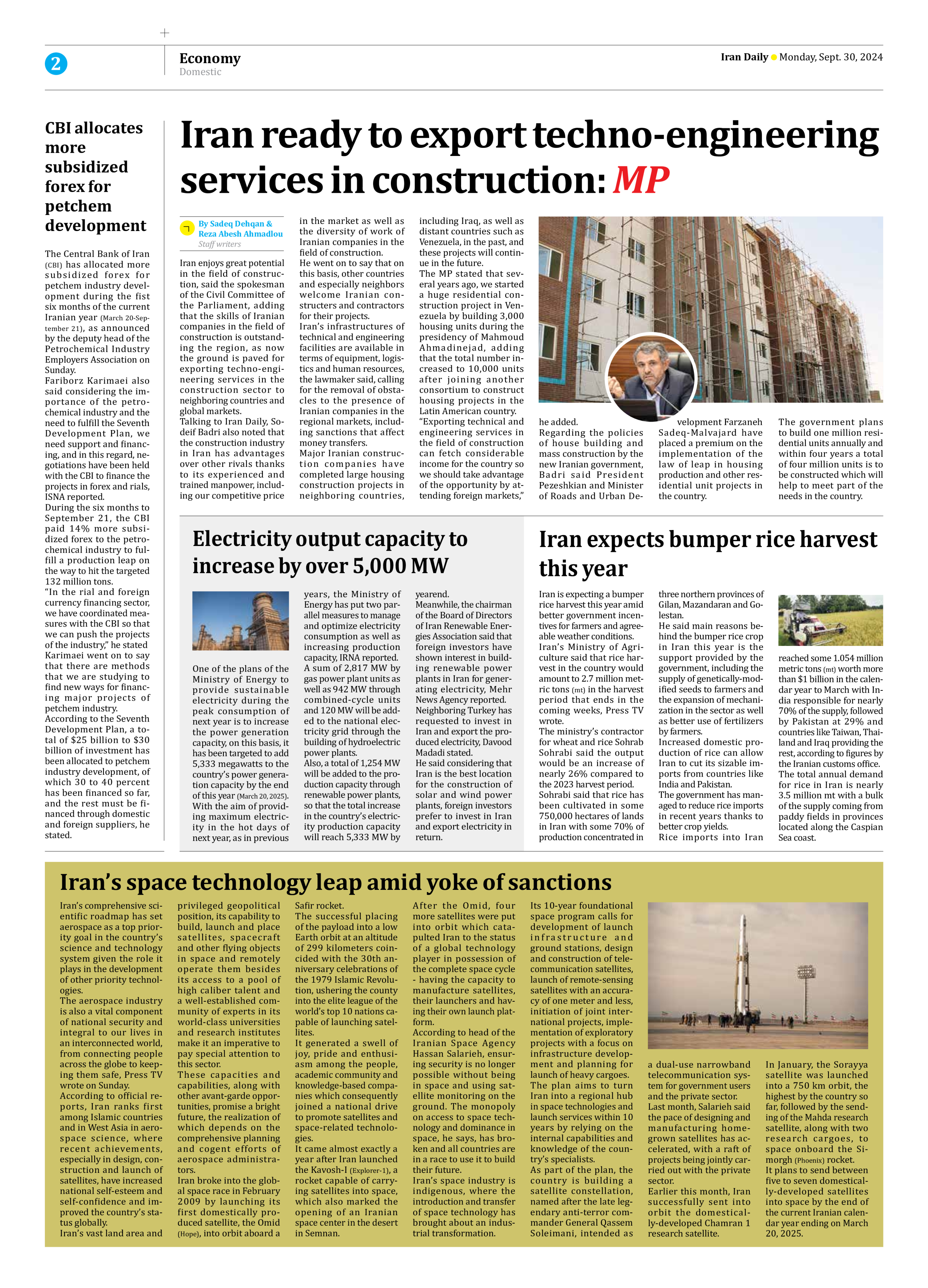
Copy in clipboard...
Iran’s space technology leap amid yoke of sanctions
The aerospace industry is also a vital component of national security and integral to our lives in an interconnected world, from connecting people across the globe to keeping them safe, Press TV wrote on Sunday.
According to official reports, Iran ranks first among Islamic countries and in West Asia in aerospace science, where recent achievements, especially in design, construction and launch of satellites, have increased national self-esteem and self-confidence and improved the country’s status globally.
Iran’s vast land area and privileged geopolitical position, its capability to build, launch and place satellites, spacecraft and other flying objects in space and remotely operate them besides its access to a pool of high caliber talent and a well-established community of experts in its world-class universities and research institutes make it an imperative to pay special attention to this sector.
These capacities and capabilities, along with other avant-garde opportunities, promise a bright future, the realization of which depends on the comprehensive planning and cogent efforts of aerospace administrators.
Iran broke into the global space race in February 2009 by launching its first domestically produced satellite, the Omid (Hope), into orbit aboard a Safir rocket.
The successful placing of the payload into a low Earth orbit at an altitude of 299 kilometers coincided with the 30th anniversary celebrations of the 1979 Islamic Revolution, ushering the county into the elite league of the world’s top 10 nations capable of launching satellites.
It generated a swell of joy, pride and enthusiasm among the people, academic community and knowledge-based companies which consequently joined a national drive to promote satellites and space-related technologies.
It came almost exactly a year after Iran launched the Kavosh-I (Explorer-1), a rocket capable of carrying satellites into space, which also marked the opening of an Iranian space center in the desert in Semnan.
After the Omid, four more satellites were put into orbit which catapulted Iran to the status of a global technology player in possession of the complete space cycle - having the capacity to manufacture satellites, their launchers and having their own launch platform.
According to head of the Iranian Space Agency Hassan Salarieh, ensuring security is no longer possible without being in space and using satellite monitoring on the ground. The monopoly on access to space technology and dominance in space, he says, has broken and all countries are in a race to use it to build their future.
Iran’s space industry is indigenous, where the introduction and transfer of space technology has brought about an industrial transformation.
Its 10-year foundational space program calls for development of launch infrastructure and ground stations, design and construction of telecommunication satellites, launch of remote-sensing satellites with an accuracy of one meter and less, initiation of joint international projects, implementation of exploratory projects with a focus on infrastructure development and planning for launch of heavy cargoes.
The plan aims to turn Iran into a regional hub in space technologies and launch services within 10 years by relying on the internal capabilities and knowledge of the country’s specialists.
As part of the plan, the country is building a satellite constellation, named after the late legendary anti-terror commander General Qassem Soleimani, intended as a dual-use narrowband telecommunication system for government users and the private sector.
Last month, Salarieh said the pace of designing and manufacturing homegrown satellites has accelerated, with a raft of projects being jointly carried out with the private sector.
Earlier this month, Iran successfully sent into orbit the domestically-developed Chamran 1 research satellite.
In January, the Sorayya satellite was launched into a 750 km orbit, the highest by the country so far, followed by the sending of the Mahda research satellite, along with two research cargoes, to space onboard the Simorgh (Phoenix) rocket.
It plans to send between five to seven domestically-developed satellites into space by the end of the current Iranian calendar year ending on March 20, 2025.







